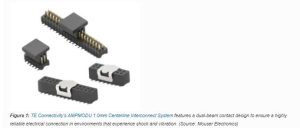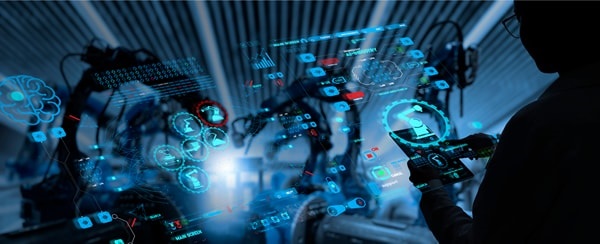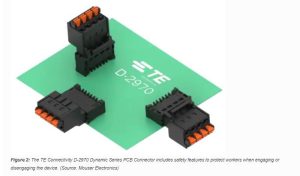Industrial Automation (IA) technologies made huge jumps in innovation over the last two years. Experts estimate industrial automation will reach over 300 billion dollars in revenue by 2027 and attribute much of its growth to technological advancements such as detecting the minute quantities of trace elements. Manufacturing has ramped up across several different industries, many of which are subject to stringent safety and quality regulations such as auto, electronics, medical and home products. Integration of robotics, industrial internet of things (IIoT), artificial intelligence (AI) and programmable logic controllers (PLCs) are enabling this huge leap forward. In this blog, we explore how innovations in industrial automation technologies are employed in different manufacturing scenarios to improve cycle times, deliver consistent product quality, and mitigate risks to workers.
Industrial Automation uses machines to carry out repetitive tasks in manufacturing environments. The tasks can include ones that pose a risk to human workers—such as lifting heavy objects, working with hazardous materials, or working in extreme temperatures. Once a process is automated to complete a task, a combination of industrial automation technologies use logic and programming to guide machines and robots to function or carry out tasks faster and more efficiently with little human intervention. Let’s explore how industrial automation technology is deployed across different manufacturing scenarios.
Robotic Process Automation
Robotic process automation focuses on automating the most mundane computer-based tasks and processes. It uses a combination of computer vision and machine learning to automate these repetitive, high-volume tasks that can be monotonous to a human worker. This robotic process free up employees for more dynamic work that the robot is not able to copy or process because these tasks do not consist of a pre-defined set of rules or signals that are followed each time.
Fixed Automation
Hard or fixed automation is in place for a repetitive production that requires a fast turnaround. In fixed automation production facilities, all the production equipment would need to be reprogrammed and even moved to accommodate changes to the product style. The advantages to having everything fixed in place are that the products are produced very quickly, making them cost-effective and consistent without much human intervention.
Programmable Automation
Programmable automation is used when a variety of different customizations can be applied. Each production batch run can differ slightly or greatly from one another depending on how much the equipment is reprogrammed. A numerical control machine is a great example of programmable automation. The machine tool is controlled by the computer program, which has different product styles programmed within it to be selected by a worker. In the simplest run, a worker can select a product style and for how long the production run will be.
Soft Automation
Soft automation has flexibility built in so that production runs are changed quickly and easily based on consumer needs or demands. Soft automation machines are programmed through a computer interface to create custom products for low to medium production runs. Soft flexible automation can reduce downtime between runs because the change occurs through computer reprogramming rather than changing equipment or other hardware.
Industrial Automation: Consistent, Reliable, and Safe
Consistent product quality is one significant advantage industrial automation can deliver. A robot or machine can do repetitive tasks with precision and provide the same quality result. Additionally, automated factories that regularly conduct equipment monitoring and inspections and have a predictive maintenance strategy in place significantly benefit from reduced manufacturing downtimes, increased productivity, improved product cycle times, and reduced accident risk. By implementing these maintenance measures, factory workers are free to perform quality checks to ensure everything is running smoothly. But this level of industrial automation relies on a lot of interconnects to function correctly. TE Connectivity’s AMPMODU 1.0mm and 2.00mm Centerline Interconnect Systems (Figure 1) offer a dual-beam contact design with a reliable, secure electrical connection even in the harshest shock and vibration environments. These connectors are well-suited for several industrial applications, including PLCs, control panels, robotics, instrumentation, and test equipment.

Industry 4.0 collaborative robots (cobots) are designed to operate alongside workers within a defined space. Cobots can assist workers by removing the strain of repetitive motion to parts of the manufacturing process that requires materials to be cut, positioned, or handled the same way each time. This level of factory operation where the robot and human perform tasks simultaneously during production helps prevent muscle and skeletal issues for the workers. Cobots need to be fitted with visual indications that tell the workers when the robot is in collaborative operation. They also need to have active speed and separation monitoring, and power and force limiting features to help ensure the worker’s safety. To design this level of safeguarded workspace, engineers need interconnects that are robust, reliable, compact, and offer design flexibility. The TE Connectivity D-2970 Dynamic Series PCB Connector (Figure 2) offers all that and more. These connectors have a centre-locking lever with audible and tactile mating feedback to ensure safe mating and a lower insertion force which allows users to release the wires without injuring their fingertips. An IP20 “finger-safe” housing also prevents unintended operator contact with live components. These connectors are designed to handle most industrial automation applications.
Conclusion
Modern advances in industrial automation technologies like the integration of IIoT, robotics, and AI have resulted in substantial increases to manufacturing outputs across a broad range of vertical markets, translating into billions of revenue dollars for manufacturing companies. This fusion of industrial automation improvements has increased manufacturing uptimes, enhanced product quality, and expanded worker safety. It has also afforded manufacturing companies the flexibility to capitalize on smaller production runs without impacting product quality. Today, consistent, reliable, and safe industrial automation keeps pace with demand while producing quality products, resulting in happy customers.
Courtesy: Mouser Electronics









